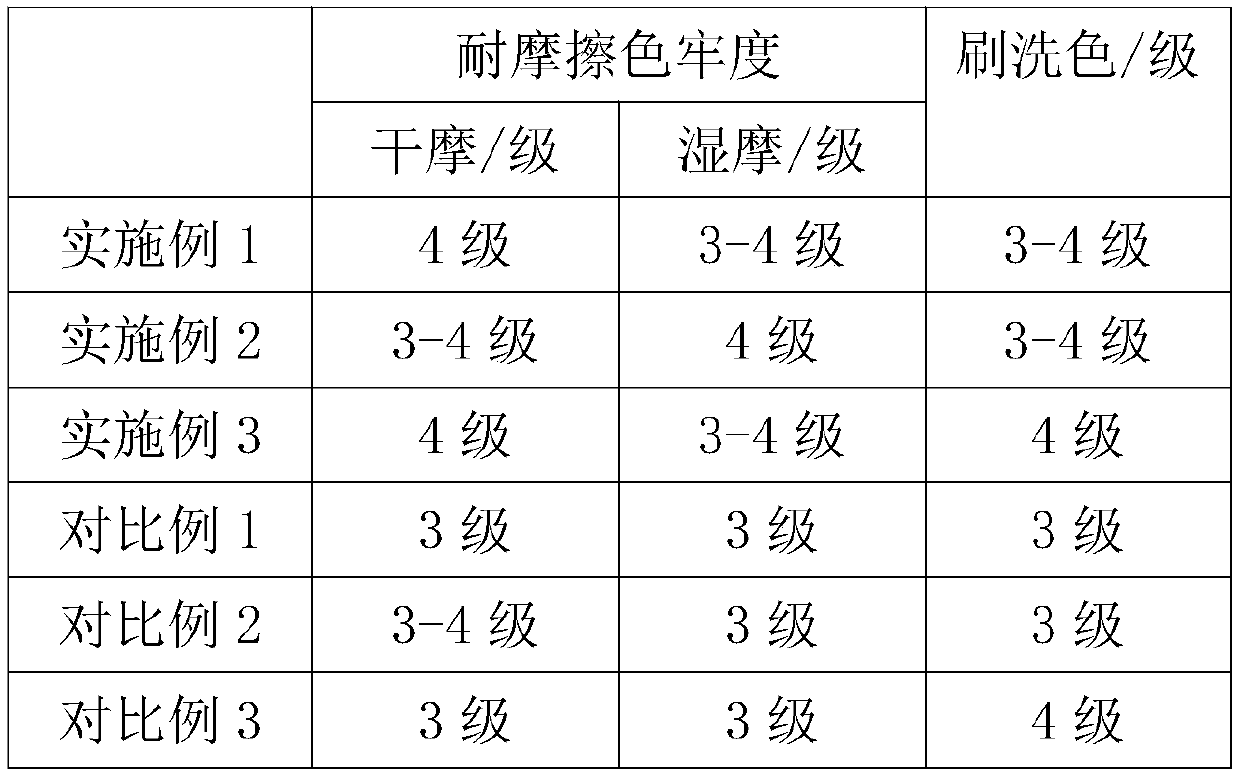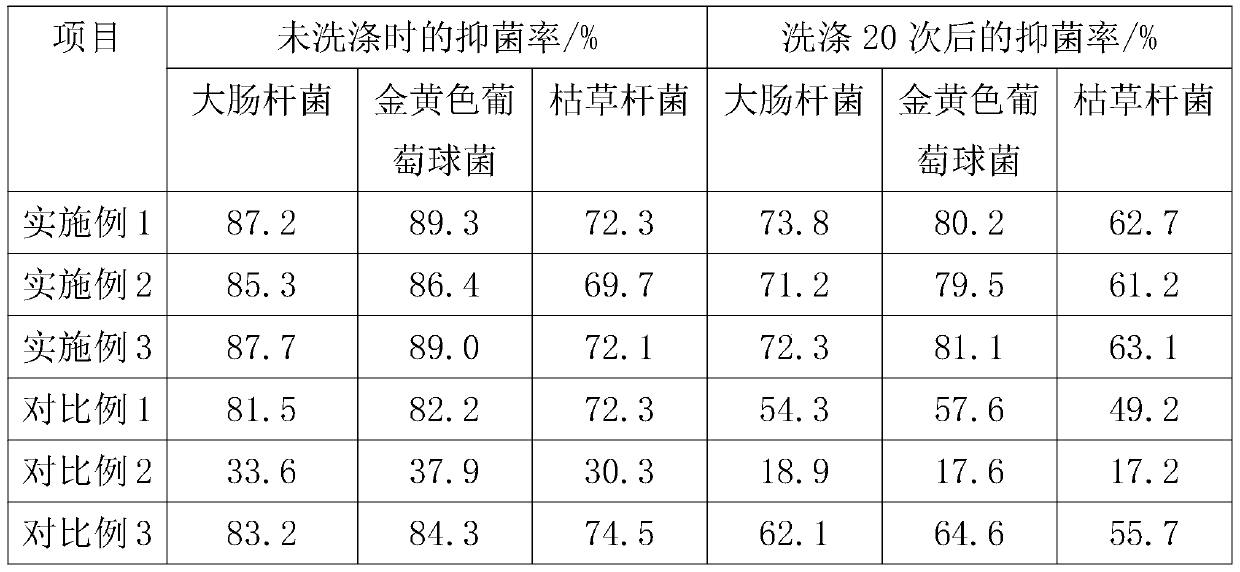Printing fabric production process
A production process and fabric technology, applied in biochemical fiber treatment, fabric surface trimming, textile material treatment, etc., can solve the problems of unable to meet the needs of printed fabrics, single function of printed fabrics, etc., to enhance antibacterial effect, reduce reunion tendency, Good safety performance
- Summary
- Abstract
- Description
- Claims
- Application Information
AI Technical Summary
Problems solved by technology
Method used
Image
Examples
Embodiment 1
[0032] (1) Prepare the base fabric, select and adopt polyester-cotton blended fabric, overflow dyeing, then wash and set the shape, and then carry out post-finishing printing treatment to obtain the base fabric;
[0033] (2) desizing and scouring, the base cloth obtained in step (1) is subjected to seam treatment, and then it is desizing treated by hydrogen peroxide-caustic soda desizing method; during desizing treatment, the lye temperature is 70°C, and the steaming temperature is 70°C. 100°C, steaming time 1h; the slurry used contains: sodium hydroxide 35g / L, hydrogen peroxide 12g / L, chitosan 3g / L, alkyl sulfonate surfactant 2g / L, hydrogen peroxide stabilizer 12g / L;
[0034] (3) select dyeing equipment to dye the fabric gained in step (2);
[0035] (4) Add fluorocarbon resin to the fabric obtained in step (3) and carry out high-temperature setting treatment in an oven; the fluorocarbon resin is a fluorine water repellent, and the dosage is 18g / L; the moving speed of the fa...
Embodiment 2
[0045] (1) Prepare the base fabric, select and adopt polyester-cotton blended fabric, overflow dyeing, then wash and set the shape, and then carry out post-finishing printing treatment to obtain the base fabric;
[0046] (2) desizing and scouring, the base cloth obtained in step (1) is subjected to seam treatment, and then it is desizing treated by hydrogen peroxide-caustic soda desizing method; during desizing treatment, the temperature of lye is 85°C, and the steaming temperature is 85°C. 102°C, steaming time 1.5h; the slurry used contains: sodium hydroxide 45g / L, hydrogen peroxide 16g / L, chitosan 5g / L, alkylsulfonate surfactant 4g / L, hydrogen peroxide stabilizer 16g / L;
[0047] (3) select dyeing equipment to dye the fabric gained in step (2);
[0048] (4) Add fluorocarbon resin to the fabric obtained in step (3) and carry out high-temperature setting treatment in an oven; the fluorocarbon resin is a fluorine water repellent, and the consumption is 20g / L; the moving speed o...
Embodiment 3
[0058] (1) Prepare the base fabric, select and adopt polyester-cotton blended fabric, overflow dyeing, then wash and set the shape, and then carry out post-finishing printing treatment to obtain the base fabric;
[0059] (2) desizing and scouring, the base cloth obtained in step (1) is subjected to seam treatment, and then it is desizing treated by hydrogen peroxide-caustic soda desizing method; during desizing treatment, the temperature of the lye is 80°C, and the steaming temperature is 80°C. 101°C, steaming time 1h; the slurry used contains: sodium hydroxide 40g / L, hydrogen peroxide 13g / L, chitosan 4g / L, alkyl sulfonate surfactant 3g / L, hydrogen peroxide stabilizer 13g / L;
[0060] (3) select dyeing equipment to dye the fabric gained in step (2);
[0061] (4) Add fluorocarbon resin to the fabric obtained in step (3) and carry out high-temperature setting treatment in an oven; the fluorocarbon resin is a fluorine water repellent, and the dosage is 19g / L; the moving speed of...
PUM
| Property | Measurement | Unit |
|---|---|---|
| width | aaaaa | aaaaa |
Abstract
Description
Claims
Application Information
 Login to View More
Login to View More - R&D
- Intellectual Property
- Life Sciences
- Materials
- Tech Scout
- Unparalleled Data Quality
- Higher Quality Content
- 60% Fewer Hallucinations
Browse by: Latest US Patents, China's latest patents, Technical Efficacy Thesaurus, Application Domain, Technology Topic, Popular Technical Reports.
© 2025 PatSnap. All rights reserved.Legal|Privacy policy|Modern Slavery Act Transparency Statement|Sitemap|About US| Contact US: help@patsnap.com


